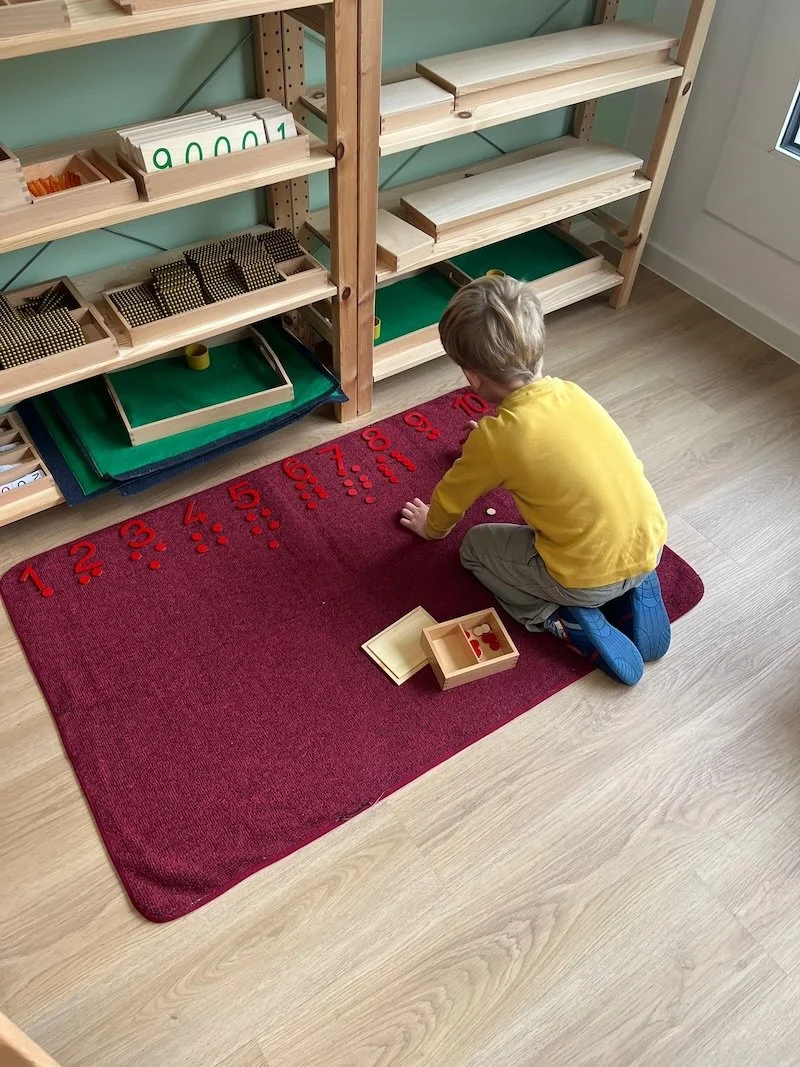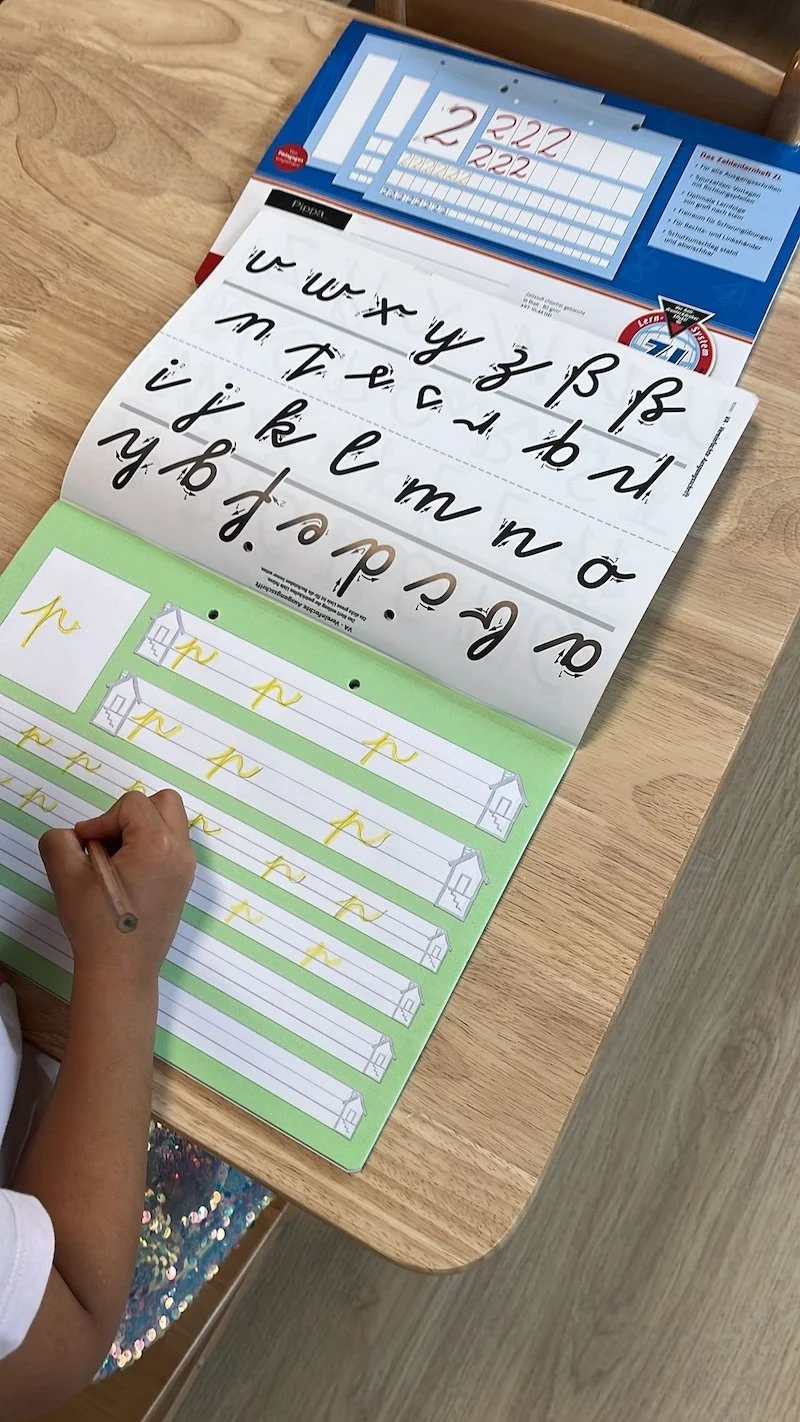The Montessori Cycle for Ages 3–6: An Essential Three-Stage Progression
In a Montessori classroom, children aged 3 to 6 learn together in the same environment, each progressing at their own pace through a three-year cycle that cannot be separated.
This setting promotes confidence, concentration, and independence—fundamental skills for all future learning.
First year: discovery and exploration (3–4 years old)
Three-year-olds enter a rich and orderly world. They observe, experiment, touch, pour, sort, and tidy up. Through sensory and practical life materials, they develop their fine motor skills, independence, and sense of order.
This is the year when they discover the joy of learning for themselves and begin to build the foundations of concentration and self-confidence.
Second year: consolidation and understanding (4–5 years old)
Building on their experience, children deepen their knowledge. They master movements, understand the links between activities, and begin to reason. Montessori materials naturally lead them toward abstraction: their first letters, sounds, quantities, numbers, and logical relationships.
This is a period of growth: children become more precise, intellectually curious, and able to work on longer tasks.
Third year: achievement and transmission (5–6 years old)
The last year of the cycle is a key stage. The child becomes the “big one” in the group: they consolidate everything they have learned and pass on their knowledge to the younger children, which strengthens their confidence and sense of responsibility. They read, write, count, reason, and express themselves with ease.
This year of maturity, balance, and leadership is the ideal preparation for starting elementary school—intellectually, emotionally, and socially.
Why do the three years?
Each year of the cycle plays a complementary and essential role.
Learning progresses in a gradual and logical manner: what the child explores concretely in the first year, they understand and integrate in the second, then master and transmit in the third. It is this continuity that gives Montessori pedagogy its power.
The Montessori approach is based on repetition, freedom of choice in work, and the self-confidence that children develop over time. These qualities are not built in a few months, but thanks to the stability of the group, the consistency of the educators, and the length of the cycle.
It is in the third year that children fully reveal the fruits of their efforts: they become independent, precise, capable of helping younger children, and feel a real sense of pride in having grown up in this environment.
Thus, doing only one year is like opening a door without having time to walk through it. The true benefit of Montessori education is evident over time: it is a three-year journey, designed to support the child's overall development, from discovery to mastery, in an atmosphere of trust and joy of learning.




